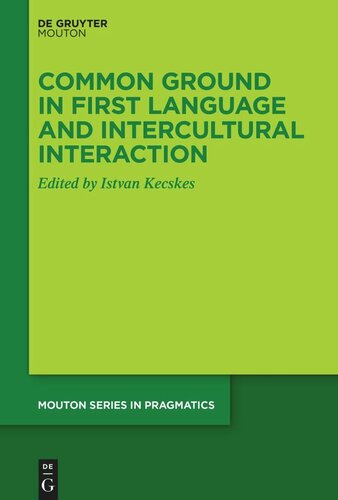

Most ebook files are in PDF format, so you can easily read them using various software such as Foxit Reader or directly on the Google Chrome browser.
Some ebook files are released by publishers in other formats such as .awz, .mobi, .epub, .fb2, etc. You may need to install specific software to read these formats on mobile/PC, such as Calibre.
Please read the tutorial at this link: https://ebookbell.com/faq
We offer FREE conversion to the popular formats you request; however, this may take some time. Therefore, right after payment, please email us, and we will try to provide the service as quickly as possible.
For some exceptional file formats or broken links (if any), please refrain from opening any disputes. Instead, email us first, and we will try to assist within a maximum of 6 hours.
EbookBell Team

4.8
24 reviewsIn recent years the traditional approach to common ground as a body of information shared between participants of a communicative process has been challenged. Taking into account not only L1 but also intercultural interactions and attempting to bring together the traditional view with the egocentrism-based view of cognitive psychologists, it has been argued that construction of common ground is a dynamic, emergent process. It is the convergence of the mental representation of shared knowledge that we activate, assumed mutual knowledge that we seek, and rapport as well as knowledge that we co-construct in the communicative process.
This dynamic understanding of common ground has been applied in many research projects addressing both L1 and intercultural interactions in recent years. As a result several new elements, aspects and interpretations of common ground have been identified. Some researchers came to view common ground as one component in a complex contextual information structure. Others, analyzing intercultural interactions, pointed out the dynamism of the interplay of core common ground and emergent common ground.
The book brings together researchers from different angles of pragmatics and communication to examine (i) what adjustments to the notion of common ground based on L1 communication should be made in the light of research in intercultural communication; (ii) what the relationship is between context, situation and common ground, and (iii) how relevant knowledge and content get selected for inclusion into core and emergent common ground.